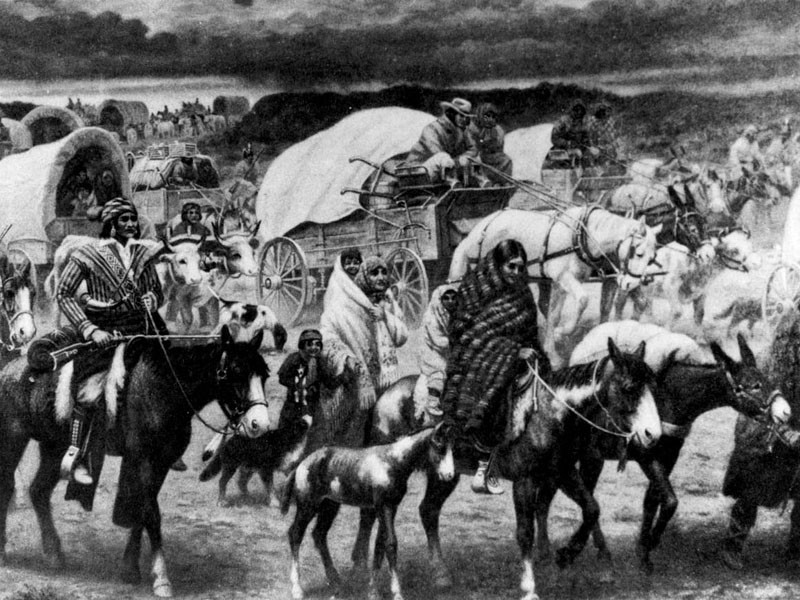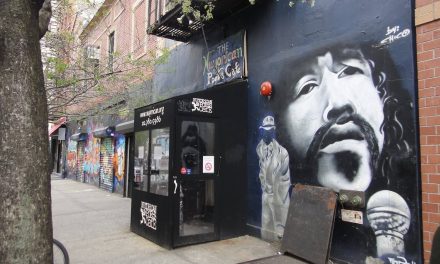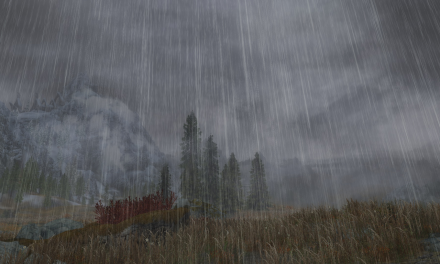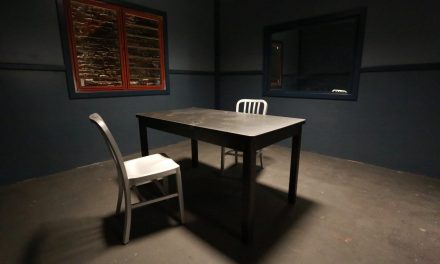By Stephanie Cook
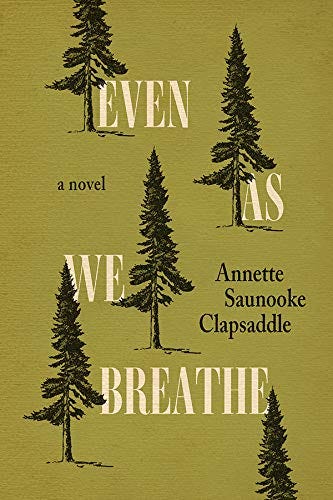
Annette Saunooke Clapsaddle’s book, Even as We Breathe, inhabits a space throughout its pages between the past and the present, blurring the border between the two along the way. Told primarily in present tense through the eyes of the main character, Cowney Sequoia, the story looks back on a formative summer in his life spent between the worlds of Cherokee and Asheville, North Carolina. Boundaries and borders permeate the tale, both physical such as state and national boundaries, as well as metaphorical ones like the border between private and public citizenry and even between freedom and imprisonment. I argue, however, that the most persistent border Clapsaddle entertains in her book is the border between past and present. Even as We Breathe presents a type of Cherokee “wonder story” which “act as conduits for Cherokee cultural memory of place…[and] articulate a dense, multifaceted portrayal of ‘portal’ or intradimensional sites within Cherokee lands” (Martin 39). By using the framework of a wonder story, Clapsaddle reveals the hidden border present between the land and the memory of her characters which unites the past to the present, both individually as well as to Cherokee culture in a larger sense. By highlighting the metaphorical borders present, she invites readers to “exceed the physical limitations of this world…[and] suggests another, real, intradimensional world that already exists within present time and is contiguous with actual, visible landscapes” (Martin 44). Clapsaddle creates a border between past and present, using memory as her tool, in three distinct ways: through her cave-bear and healing waters wonder story re-creation, by using fire as a metaphor for colonization, and through the use of bones to recall a collective past on the landscape, ultimately presenting her readers with a “restorying,” which according to Qwo-Li Driskill, Cherokee Scholar, creates “a retelling and imagining of stories that restores and continues cultural memories” (qtd. in Martin 51).
Clapsaddle uses her story to introduce Western and non-native readers to Cherokee culture in both subtle and not-so-subtle ways, by tying memory to the landscape. Her story is imbued with references to Cherokee history and cultural traditions, such as the tale of the “Magic” or “Enchanted” lake. In these Cherokee stories, “events always happen in specific places, and certain places are considered doorways to other worlds” (Duncan et. al. 69). The Magic Lake tale can take many forms depending on which source one looks to, but in Even as We Breathe Clapsaddle has pulled parts of the Cherokee story into her own, “restorying” it for a new audience. Clapsaddle adds another layer to the tale, however, that of memory. As Cowney follows the trail of the monkey, Edgar, through the woods, he suddenly stumbles upon a waterfall remarking, “[it] extended so wide across the mountain slope…that I feared it might be home to a sleeping bear” (Clapsaddle 93). Upon reaching this destination, the past starts to blend with the present as Cowney has flashbacks envisioning his father at the barbed wire fence where he died during the war. His visions move closer to the present, as he recalls Lishie telling him, “Your grandpa used to swear that that boy [Cowney’s father] would go in a cave and come out a waterfall clear on the other side of the mountain,” and Cowney wonders if this is that same waterfall (Clapsaddle 94). After these visions, the cave and waterfall become central to Cowney’s time in Cherokee, with him visiting the location nearly every time he comes home from Asheville. After Lishie’s death, Cowney makes his way back to the cave in a fit of emotional trauma where he watches an injured bear heal its leg in the same waters he too sits in to heal his own heart. The story Clapsaddle relates over many pages of her book is nearly identical to the story Freeman Owle, Cherokee member, recounts of “The Magic Lake,” where a young man also watches a bear heal its injured leg with the water’s power (Duncan et. al. 43). James Mooney, Cherokee ethnologist, related a similar tale of “Ataga’hi, The Enchanted Lake,” after his interviews with Cherokee people in the 19th century (qtd. in Martin 43). In all of the versions of this story, including Clapsaddle’s, the cave and its water represent a border, or a portal, where settings “transmit memory of the importance of mountainous sites as part of their [Cherokee] storytelling repertoire,” and where the “site is partially a doubling of real-world space while also being a ‘lost’ world that was once part of this one” (Martin 42). In this way, not only does Clapsaddle use the cave to cross a border between Cowney and his lost past, but also to connect her readers to the landscapes and history of the Cherokee prior to colonization and the transformation of their nation by white “progress.”
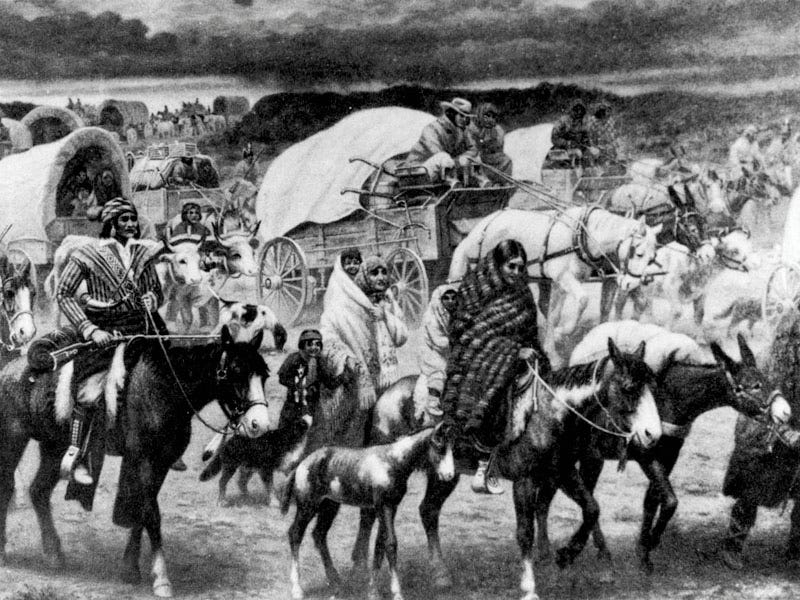
The Cherokee Removal
This white “progress” came to the Cherokee nation at least twice. Once, during the Removal, in which the Eastern Band of Cherokee fought back to remain on their ancestral land and ultimately gained independence through incorporating and purchasing the land today known as the Qualla Boundary in the late 1800s (Mitchell 148). Of this event, Clapsaddle herself has commented on the border it created stating, “[it] separated us from our brothers and sisters, almost literally. There are three federally recognized Cherokee tribes…We are historically one tribe, but we function completely separate now” (House, “Interview”). As if this weren’t enough, white “progress” sought to again violate the tribe’s sovereign land during the 1930s as Great Smoky Mountain National Park (GSMNP) and the Blue Ridge Parkway were being built (Mitchell 147). It is directly after this period that Even as We Breathe takes place, again contextualizing Clapsaddle’s “wonder story” as “one at a moment of Cherokee cultural upheaval, with a particular set of beliefs being recast for a new audience, both Indigenous and European American” (Martin 40). Clapsaddle remarks on this white encroachment throughout her story by using the metaphorical device of fire which creates a border between the Cherokee nation and the white civilization encircling it. As Cowney wakes up to the smell of fire for the first time in Chapter 11 he comments, “Cherokee was bone dry…It was as if Asheville’s torrential rains had sucked all the moisture from the west. It was unusual for places of such close proximity to suffer in such distinctly different ways” (Clapsaddle 71). Here, Clapsaddle is almost directly remarking on the difference between the two cultures, as well as the injustices that exist at the border between Indigenous and white civilization. Clapsaddle’s fire metaphor echoes the ideas of Daniel Heath Justice who states of the Cherokee: “We have been burned and emerged again, renewed from the ashes. We have survived the threatened apocalypse of white colonization through our ability to adapt and realign ourselves…without abandoning ourselves in the process” (qtd. in Ross-Mulkey 140). The fire line which the characters concern themselves with for the rest of the story acts as a literal, physical boundary between the two worlds. Cowney’s uncle/father, Bud, then represents someone caught in the middle; he has one foot in the past, or Cherokee traditions, and another in the present, or white encroachment. The reader sees this dichotomy play out as he hunts fleeing animals at the fire line, much to Cowney’s despair, with Bud commenting, “I can’t help it if Mother Nature saw fit to set a fire” (Clapsaddle 74). While in the next line, Cowney tells the reader that these fires were likely not set by Mother Nature, but rather white people who were “bored and wanted some action,” “hunters who hated the National Park Service,” or even “campers” who the reader can assume were people in the bordering GSMNP (Clapsaddle 74). However, as the book ends, the reader finds out it is Bud who has purposefully set the fires in Cherokee in order to hunt entrapped animals, which he then, one can assume, sells to get the money he gives to Cowney for school. Through the use of fire as metaphor, Clapsaddle is able to comment on the blurred border that now exists between the Cherokee and the surrounding world of white people. As their culture has been torn piece by piece from them by white “progress,” the Cherokee in her story have fewer traditional means to survive and must instead adapt to the white world of money in exchange for goods if they are to survive. Bud, then, offers us a view from the past and into the future of Cherokee, from the vantage of the 1940s.
Clapsaddle gives her readers a further link to the past with the recurring symbol of the bone that Cowney finds buried on the Grove Park Inn property. The bone creates a tie with the past that follows Cowney throughout most of the story, creating at one point a border between his own freedom and imprisonment because of its presence. While the origins of the bone are never revealed beyond its “human” designation, the reader can assume one of two things: either the bone is ancient and has been preserved in the soil, never exposed to air, thereby never allowed to decompose until it is unearthed, and therefore, likely Native American, or it is new, only three months old, and is likely the bone of one of the diplomats or their children, imprisoned at The Grove Park Inn. As Cowney states, “The bone had lost its story” (Clapsaddle 2). Either way, the bone provides a clear border between white people and the ‘other’ in the way it has been disposed of and handled in the story. Clapsaddle uses bones as a symbolic device to unite the atrocities currently happening to the prisoners at The Grove Park Inn with the atrocities that had been so recently enacted upon the Cherokee, creating a border between the past and the present throughout her book. The book begins in the past, with the funeral of Cowney’s father, as Cowney wonders if his bones too had been picked clean. He recounts the images of the funeral through memories not of his own, but that he has been given by others, remarking, “His [dad’s] memory is as much a skeleton as his body” (Clapsaddle 8).
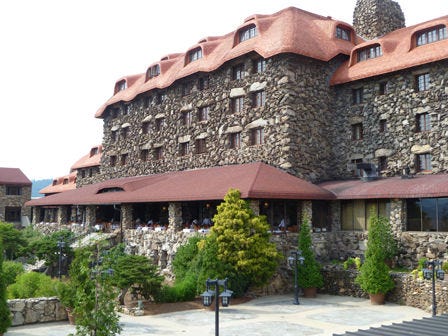
The Grove Park Inn
Further on, Cowney’s disability comes to light, a result of his own bones having not been formed correctly. The reader, only a chapter in, realizes that bones are being used as a plot device to cross the border between past and present, as Cowney again remarks on the Cherokee removal: “I sympathized as a human being, one whose ancestors knew what it was like to be forced onto a reservation. Empathy is fossilized in our bones” (Clapsaddle 23). Clapsaddle brings the reader back to the present as Cowney discusses the taboo of moving human bones, calling it “questionable” according to Cherokee values, but also claiming that “white people are the only ones allowed to dig up our bones and move them” (63). Indeed, today, as close as Franklin, N.C., white people still control access to Cherokee bones in places like the infamous Nikwasi Mound, only turning over those bones to their ancestors as recently as 2019 (McGoun, “Nikwasi”). Cowney’s bone plays a central role, with him treating it with reverence and care, while the white military leaders degrade it as only valuable for scientific analysis. Upon its return to Cowney in the final chapter, he buries the bone inside of the cave with the waterfall, the same one tied to the “Magic Lake” wonder story and the wounded bear — a place of Cherokee healing. As he surveys its final resting place, Cowney states, “I could not think of any place more appropriate…I also can remember it speaking for itself — telling me a story too familiar to ignore. These mountains have ingested our bones for centuries so that we might renew this soil with memories of our people” (Clapsaddle 229). Clapsaddle uses this landmark location to make a final call back to the Cherokee Removal, once again crossing the border between past and present with her story.
Even as We Breathe sits with the reader beyond its first ingestion. Nothing is as it seems at the surface level, and only upon researching Cherokee history and culture can one truly see the commentary Clapsaddle is making with her story. Clapsaddle uses her phenomenal work to analyze the border that exists between the past and the present in Cherokee culture and in the white cultures with which they interact. Through her use of metaphorical borders, Clapsaddle comments on past atrocities, while also making allowances for the current Cherokee way of life as result of their history with colonization. Ultimately, Clapsaddle comments on whose rightful land it remains by calling back to her bone plot device at the book’s end, stating: “This land is ours because of what is buried in the ground, not what words appear on a paper…bones shift and decay…And the only thing separating us is the stories we choose to tell about them” (229).
Works Cited
Clapsaddle, Annette Saunooke. Even as We Breathe, Kindle ed., Fireside Industry books, 2020.
Duncan, Barbara R., et. al. Origin of the Milky Way and Other Living Stories of the Cherokee. E-book, University of North Carolina Press, 2008, https://ebookcentral.proquest.com/lib/hunter-ebooks/reader.action?docID=454802&query=. Accessed 3 April 2021.
House, Silas. “An Appalachian Heritage Interview: Annette Saunooke Clapsaddle.” Appalachian Heritage, vol. 47, no. 4, 2019, p. 43. Gale Literature Resource Center, link.gale.com/apps/doc/A629149267/LitRC?u=cull73600&sid=LitRC&xid=dd600f5b. Accessed 3 Apr. 2021.
Martin, Michael S. “Settlement, Cultural Memory, and Sacred Sites: The Function of Place-Names within the Cherokee Wonder Stories.” Studies in American Indian Literature, vol. 31, no. 3–4, 2019, pp. 36–57, https://muse-jhu-edu.proxy195.nclive.org/article/749192/pdf. Accessed 3 April 2021.
McGoun, Bill. “Nikwasi Mound: Franklin’s Oldest Structure May Soon Become its Newest Attraction.” Citizen Times, 1 December 2019, https://www.citizen-times.com/story/news/local/2019/12/01/nikwasi-mound-franklins-oldest-structure-become-its-newest-attraction/4332182002/. Accessed 3 April 2021.
Mitchell, Anne V. “Culture, History, and Development on the Qualla Boundary.” Appalachian Journal, vol. 24, no. 2, 1997, pp. 144–191, https://www-jstor-org.proxy195.nclive.org/stable/pdf/40933835.pdf?refreqid=excelsior%3Aafdf25a828b16e51c367638ee5da45b9. Accessed 3 April 2021.
Ross-Mulkey, Mikhelle. “The Cherokee Phoenix: Resistance and Accommodation.” Native South, vol. 5, 2012, pp. 123–148,166. ProQuest, http://proxy195.nclive.org/login?url=https://www.proquest.com/scholarly-journals/cherokee-phoenix-resistance-accommodation/docview/1419387176/se-2?accountid=14968. Accessed 3 April 2021.

